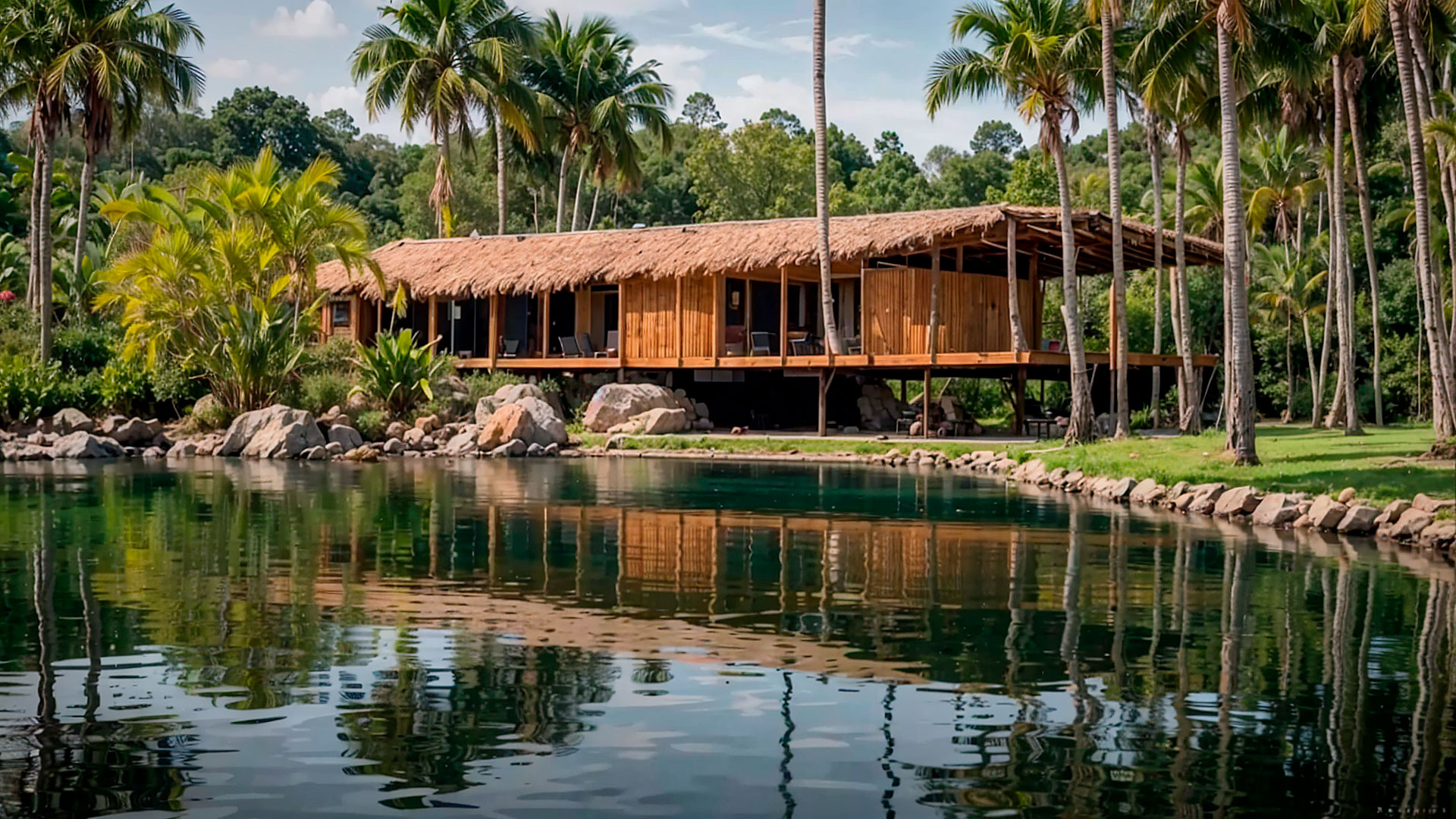So-called biomaterials, produced from renewable natural sources, are gaining ground in construction and architecture. Among the most common, used since ancient times, are wood, bamboo, cork, straw and adobe. Today, however, innovations are constantly emerging, such as bioplastics or composites made from organic waste from fungi, algae and others.
In the field of construction of water parks or other leisure and tourism attractions, biomaterials offer a number of properties and advantages that make them particularly interesting. Let’s see what these advantages and properties are:
Sustainability and low environmental impact of biomaterials.
The use of biomaterials reduces dependence on conventional materials such as concrete and synthetic polymers. In this way, they contribute to reducing the environmental impact of construction and to conserving non-renewable resources. In addition, the production of biomaterials generates lower emissions of CO2 and other greenhouse gases. Finally, many of them are biodegradable, which minimises long-term environmental pollution and facilitates recycling.
Resilience of biomaterials
Some biomaterials, such as treated tropical woods or cork, are highly resistant to moisture. This makes them ideal for use in aquatic environments, where exposure to water and moisture is constant.
Insulation capacity of biomaterials
Biomaterials such as cork or other natural derivatives often have excellent thermal insulation properties. This contributes to the energy efficiency of installations and reduces energy consumption in air-conditioning systems.
Durability of biomaterials
With proper treatment and regular maintenance, many biomaterials offer a long service life. In doing so, they support the circular economy and extend the longevity of installations.
As we can see, biomaterials not only contribute to a significant reduction of the carbon footprint, but also improve the relationship of facilities with the natural environment. In other words, they minimise the environmental impact of the construction sector, increase operational efficiency and promote the use of renewable resources. In this way, they are in line with climate change reduction policies and sustainable practices in leisure and tourism.
By Ángel Ibáñez Pérez, senior MEP engineer in the Architecture Department of Amusement Logic








